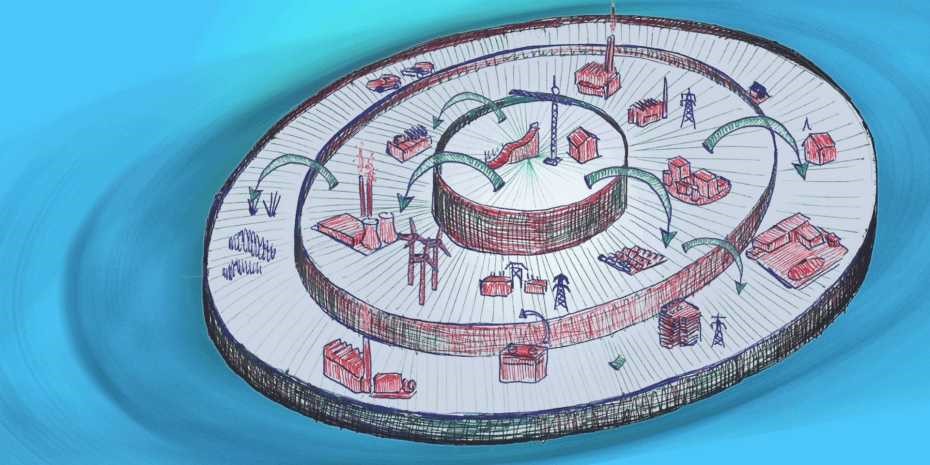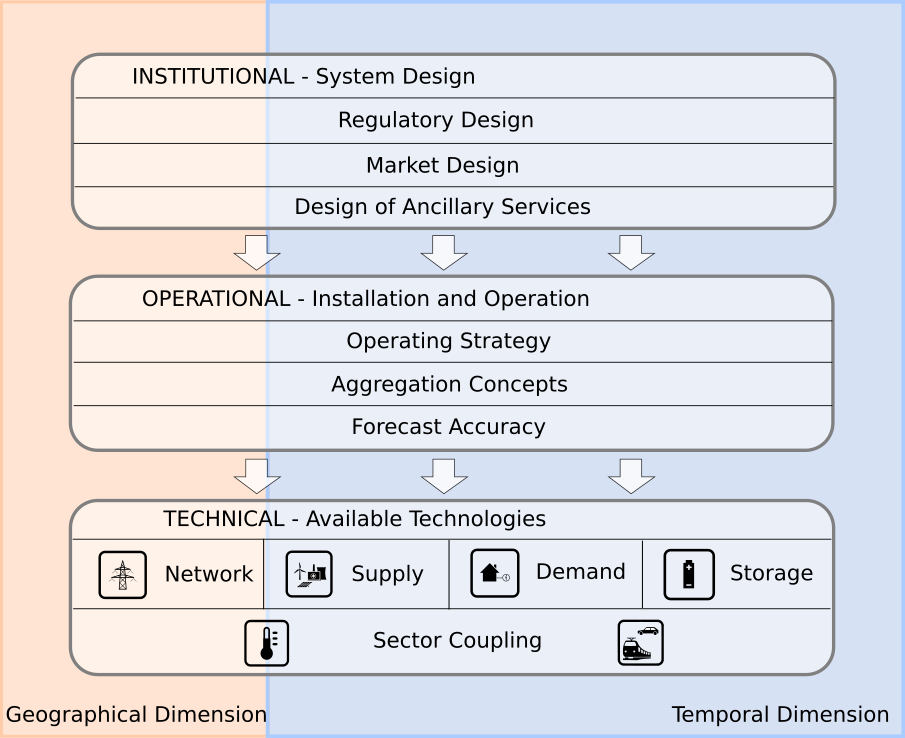Energy System Modeling and Pathways
The interrelations between the economics, policy-making and physics of the energy system are quite complex but it is of crucial importance to understand these relationships when identifying pathways to achieve rapidly decreasing emissions in the energy sector. Hence, in the past years, PSL has been a leading part of a major collaborative effort within ETH initiated by the Energy Science to build Nexus-e, a modeling and simulation platform that captures these complex interdependencies and provides insights into the future of the Swiss electric energy system.
The platform is built in a modular form and computes the most economical expansion of the system to supply the future demand taking into account resulting market dispatch, reliability of the system and the macroeconomic environment. The results generated within this project have gained significant attention by the Swiss Department of Energy. Parallel and complementary to this effort, researchers at PSL are investigating the modeling of the electrification of the transportation sector and the interactions of the gas system with the electric power system. The plan is to integrate these aspects also into the Nexus-e platform to provide an even more holistic view of the energy system.
Researchers at PSL are responsible for developing the Centralized and Distributed Investments Modules of the external pageNexus-e Interconnected Energy Systems Modeling Platformcall_made, namely CentIv and DistIv, which aim to optimize the investment decisions of energy resources at the transmission and distribution levels.
We solve the investment and dispatch optimization problems from two perspectives, i.e., 1) the system perspective; and 2) the individual investor’s/operator’s perspective:
1) To solve the problem from the system perspective, for a pre-defined examined year, we co-optimize the investment and operational decisions of all existing and potential candidate energy resources in the system, aiming to minimize the total system cost. Furthermore, we investigate the impacts of policy changes, network conditions, and market environments on the results.
2) To solve the problem from the individual’s perspective, we conduct the techno-economic analysis for different consumers considering the heterogeneity in parameters such as electricity consumption, weather conditions, rooftop sizes (when analyzing the rooftop-solar investment), and geographical locations. We also research the potential influences of investment decisions on the (primarily low-voltage) grid and explore the solutions to the potential negative consequences.
Contact: Dr. Xuejiao Han
Flexibility as the ability to balance supply and demand is one crucial dimension in the operation of power systems. As conventional power plants are being more and more replaced by variable renewable energy sources, the provision of flexibility will move from the supply side to other flexibility options. Next to the transition of the supply system, more and more new technologies such as electric vehicles, heat pumps or PV storage systems are introduced to the power systems. A smart coordination of these could provide a significant share of the required flexibility. As many of the mentioned technologies are being introduced to the distribution grid level, a first goal of this project is to determine the flexibility available from distribution grids. In a second step, the optimal mix dispatch of different flexibility options on the distribution as well as transmission level are determined for the German energy system. For both analysis, demand, supply, storage and sector coupling elements are considered as possible flexibility options, being able to shift at least part of their power output or demand in time. Different operating strategies and aggregation concepts of these flexibility options are compared on their effectiveness to allow for a stable system operation. The transmission and distribution grids are considered as a measure to connect geographically distributed units and allow for a regional balance of supply and demand.
The development and operation of power systems is not solely a technical issue but highly influenced by economical and regulatory aspects. The second part of the project therefore covers the institutional design of the power system. The topic includes regulations and market design and the aim is to determine regulatory and market measures that lead to a highly flexible future power system allowing for a 100% renewable energy system.
Contact: Anya Heider


